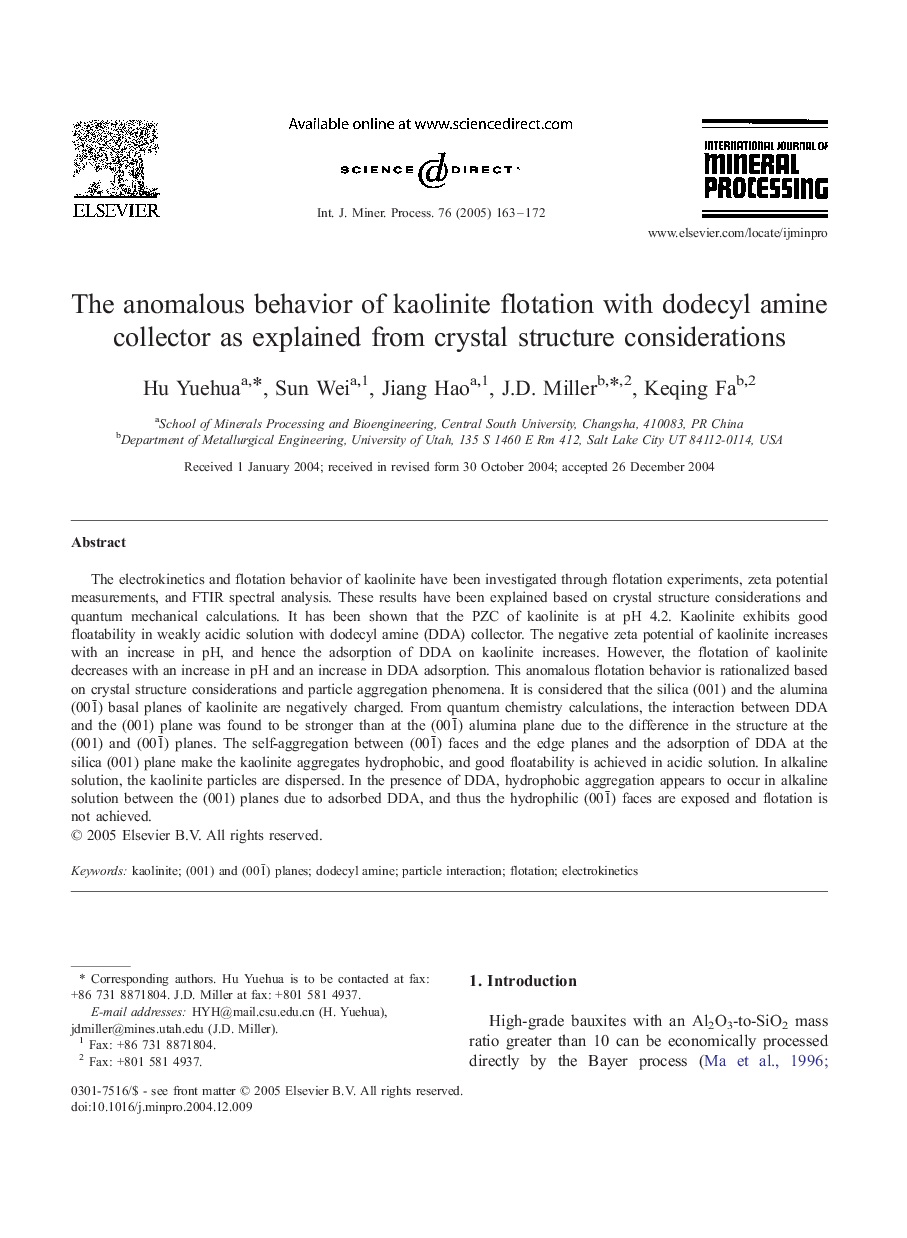| Article ID | Journal | Published Year | Pages | File Type |
|---|---|---|---|---|
| 9633037 | International Journal of Mineral Processing | 2005 | 10 Pages |
Abstract
The electrokinetics and flotation behavior of kaolinite have been investigated through flotation experiments, zeta potential measurements, and FTIR spectral analysis. These results have been explained based on crystal structure considerations and quantum mechanical calculations. It has been shown that the PZC of kaolinite is at pH 4.2. Kaolinite exhibits good floatability in weakly acidic solution with dodecyl amine (DDA) collector. The negative zeta potential of kaolinite increases with an increase in pH, and hence the adsorption of DDA on kaolinite increases. However, the flotation of kaolinite decreases with an increase in pH and an increase in DDA adsorption. This anomalous flotation behavior is rationalized based on crystal structure considerations and particle aggregation phenomena. It is considered that the silica (001) and the alumina (001¯) basal planes of kaolinite are negatively charged. From quantum chemistry calculations, the interaction between DDA and the (001) plane was found to be stronger than at the (001¯) alumina plane due to the difference in the structure at the (001) and (001¯) planes. The self-aggregation between (001¯) faces and the edge planes and the adsorption of DDA at the silica (001) plane make the kaolinite aggregates hydrophobic, and good floatability is achieved in acidic solution. In alkaline solution, the kaolinite particles are dispersed. In the presence of DDA, hydrophobic aggregation appears to occur in alkaline solution between the (001) planes due to adsorbed DDA, and thus the hydrophilic (001¯) faces are exposed and flotation is not achieved.
Related Topics
Physical Sciences and Engineering
Chemical Engineering
Chemical Engineering (General)
Authors
Yuehua Hu, Sun Wei, Jiang Hao, J.D. Miller, Keqing Fa,
